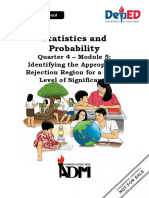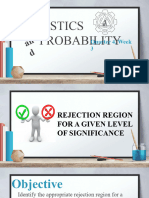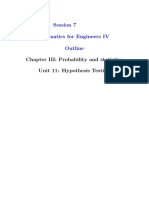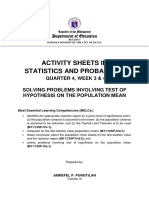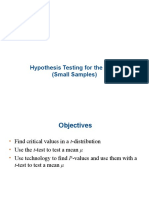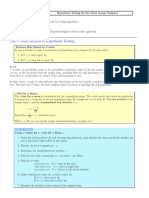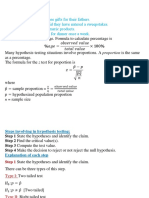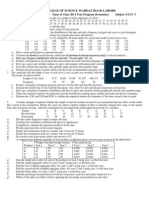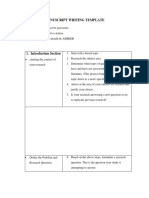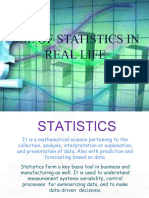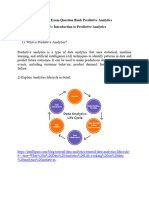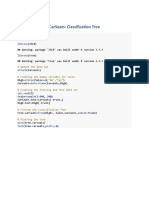0% found this document useful (0 votes)
17 views5 pagesLAS StatProb Q4 Week3
This document is a learning activity sheet for Grade 11 students on the topic of Statistical Hypothesis, focusing on critical values, significance levels, and rejection regions in hypothesis testing. It explains the concepts of critical values for z and t distributions, provides tables for critical values, and illustrates examples of hypothesis testing scenarios. The document also includes exercises for students to practice finding critical values based on different test types and significance levels.
Uploaded by
johnlloydausejo08Copyright
© © All Rights Reserved
We take content rights seriously. If you suspect this is your content, claim it here.
Available Formats
Download as PDF, TXT or read online on Scribd
0% found this document useful (0 votes)
17 views5 pagesLAS StatProb Q4 Week3
This document is a learning activity sheet for Grade 11 students on the topic of Statistical Hypothesis, focusing on critical values, significance levels, and rejection regions in hypothesis testing. It explains the concepts of critical values for z and t distributions, provides tables for critical values, and illustrates examples of hypothesis testing scenarios. The document also includes exercises for students to practice finding critical values based on different test types and significance levels.
Uploaded by
johnlloydausejo08Copyright
© © All Rights Reserved
We take content rights seriously. If you suspect this is your content, claim it here.
Available Formats
Download as PDF, TXT or read online on Scribd
/ 5

